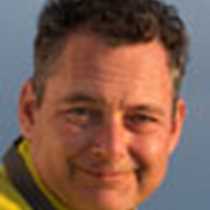To get a taste of the social aspects of the Galapagos Islands and to learn about all of the projects happening in the archipelago, we dropped anchor at Academy bay on Santa Cruz Island. After a dry landing on Puerto Ayora pier, we headed to the Charles Darwin foundation and the breeding center of the Galapagos National Park. We soon came upon several corrals with giant tortoises of different species, some being bred in captivity and others were rescued by the National Park Service, which was established in 1962.
Tortoises are a pure example of adaptive radiation. Some tortoises lived on dry islands and developed a saddle-shaped shell, others lived on green islands and gained size and a dome shape shell, while others have an intermediate shell morph-type. This is a great opportunity for us to see giant tortoises of different types all in one place, without having to go to the far barren areas of different islands to find a few into the woods. Galapagos land iguanas were also seen in captivity. These yellow dragons were once bred in captivity, but the program became so successful that we no longer needed to help them. We also saw some of the famous characters from the breeding center. We saw “Super Diego” (a male giant tortoise from Espanola Island, taken to California in the 1930’s and repatriated to the islands from the San Diego zoo), one of the heroes that helped restore the dynasty of the Espanola Giant Tortoises from a group of only 14.
We soon were done with the breeding center and headed to the highlands of Santa Cruz Island. Some of us chose to ride bikes along a 3 mile path through farm land and the greenery of the highlands. We arrived at a sugar cane press owned by a local family. Here we learned about the processing of sugar cane products, like cane Molasses, sugar cane rum and brown sugar. What shocked us was the way they process their local coffee, all 100% organic and within a small production, all handpicked and hand processed.









